Did you know a 100-gram serving of Rohu fish has 101 calories, 19.7 grams of protein, and only 2.4 grams of fat? This fish is a superfood that should be in your diet. Known as rui or roho labeo, it’s a carp from South Asia’s rivers. It’s a key fish in the region’s farming.
Rohu is loved for its great taste and nutrition. It’s full of protein and heart-healthy omega-3 fatty acids. Let’s dive into the benefits of Rohu and see why it’s a great choice for your meals.
What is Rohu?
Description and Classification
The rohu is a fish that lives in freshwater. It is part of the Cyprinidae family, also known as the carp family. It is classified under the genus Labeo and the species Labeo rohita. The rohu has a unique body shape with an arched head, making it easy to spot.
As an adult, the rohu can grow up to 45 kg (99 lb) in weight and 2 m (6.6 ft) in length. But, it usually grows to about 1⁄2 m (1.6 ft). This fish is silver-colored, streamlined, and muscular. It’s perfect for living in rivers and other freshwater places.
Rohu is a common fish in Pakistan, Thailand, Bangladesh, and northern India, especially in West Bengal. It’s also found in other areas for farming and is a key food source for many people in these regions.
| Characteristic | Description |
|---|---|
| Classification | Genus: Labeo, Species: Labeo rohita |
| Average Size | 1⁄2 m (1.6 ft) |
| Maximum Size | 2 m (6.6 ft), 45 kg (99 lb) |
| Color | Silver-colored |
| Body Shape | Streamlined, muscular |
| Habitat | Rivers, freshwater bodies |
| Conservation Status | Least Concern (LC) |
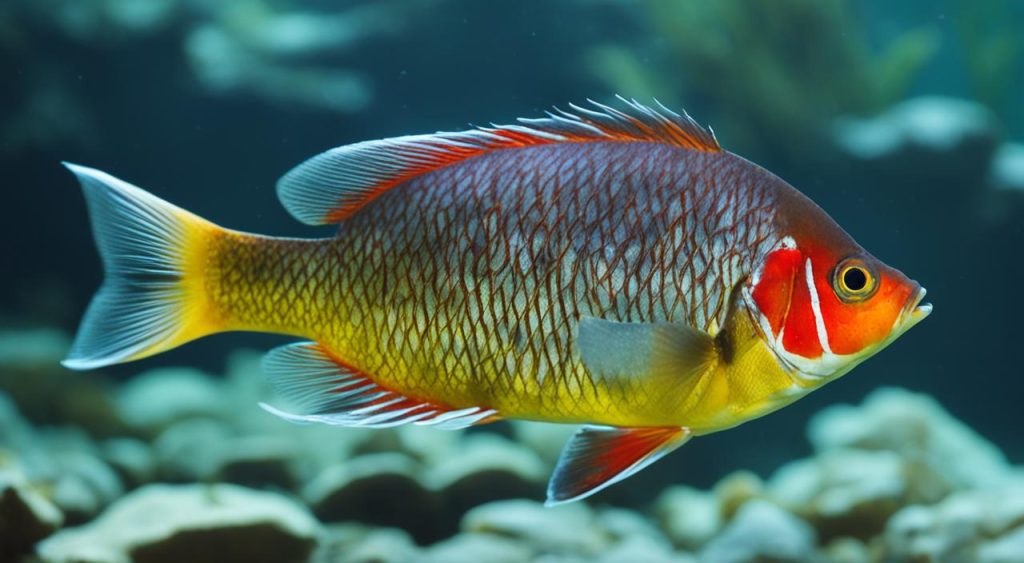
The rohu is a fish that has been farmed and introduced worldwide. It’s valued for its availability, nutrition, and ability to adapt to different environments. This makes it a key part of the global aquaculture industry.
Nutritional Powerhouse
Rohu, a freshwater fish, is a nutritional superstar. It has a great nutritional profile, perfect for a balanced diet. It gives you 19.7 grams of high-quality protein per 100 grams, which is great for muscle health.
This fish is also full of omega-3 fatty acids like EPA and DHA. These are key for heart health and brain function. So, rohu is a top choice for staying healthy.
Rohu is packed with vitamins and minerals too. You’ll find B vitamins, vitamins A, C, and D, and more. It also has phosphorus, selenium, and potassium. This makes it a true rohu nutrition powerhouse.
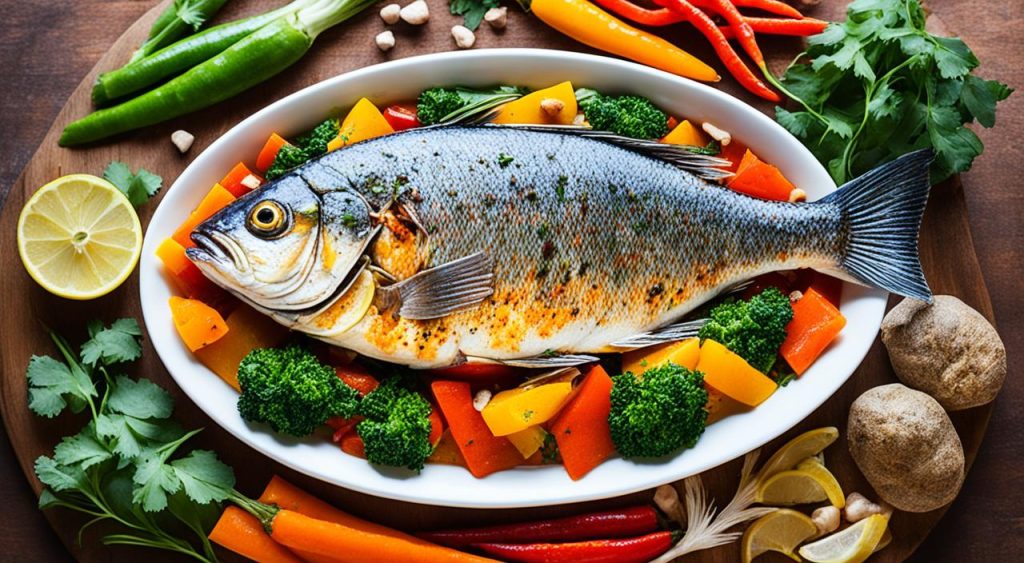
If you want to increase your protein, support your heart, or just eat something tasty and healthy, choose rohu. Its versatility and rohu health benefits make it a top pick for health lovers.
Health Benefits of Rohu
Cardiovascular Support and Brain Function
Rohu is a nutrient-rich fish that’s great for your health. It has lots of omega-3 fatty acids, just like salmon. These omega-3s help keep your heart healthy by reducing inflammation and improving blood vessel function. This lowers the risk of heart disease.
Rohu also boosts brain health with its omega-3s. These fats are important for brain cells. They help with memory, learning, and thinking. Eating rohu can make your brain work better and keep you mentally sharp.
Rohu is packed with protein, vitamins, and minerals too. It has vitamin A, vitamin C, and zinc. These nutrients help with joint health and weight control by making you feel full.
| Nutrient | Amount per 100g of Rohu | % Daily Value |
|---|---|---|
| Protein | 17g | 34% |
| Omega-3 Fatty Acids | 350mg | 105% |
| Vitamin A | 60μg | 7% |
| Vitamin C | 5mg | 6% |
| Zinc | 1mg | 9% |
Eating rohu is a smart way to support your heart, brain, and overall health. It’s easy to add to your meals and tastes good. Making rohu a part of your diet is a great choice for a healthy lifestyle.
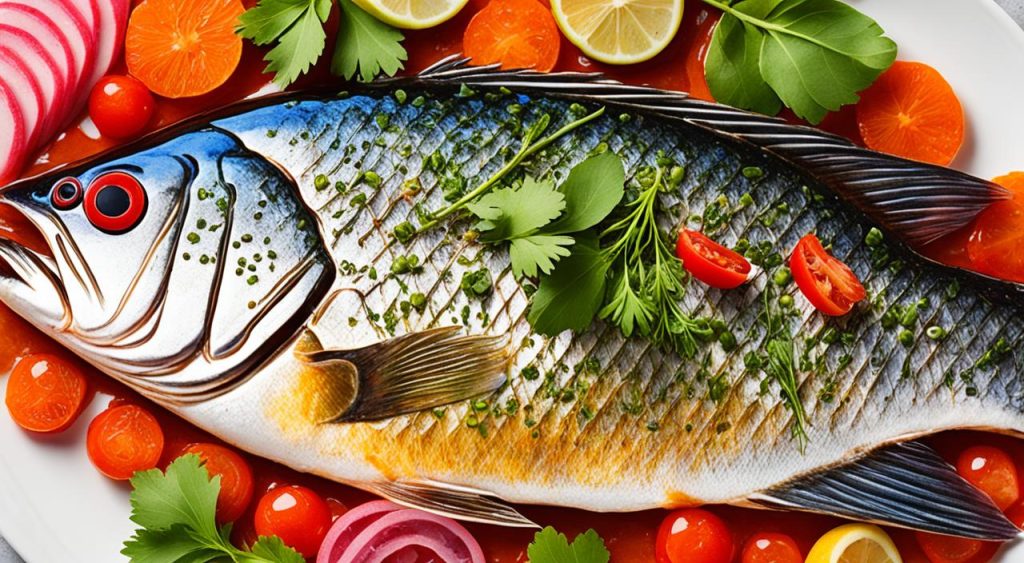
Culinary Versatility
Rohu, a freshwater fish, is known for its nutrition and versatility in cooking. It’s a key ingredient in many traditional dishes across South Asia. Countries like Bangladesh, Bhutan, Nepal, Pakistan, and some Indian states rely on rohu for their meals.
Traditional Recipes and Cooking Methods
Rohu has a mild, slightly sweet taste, making it great for many cooking methods. You can fry, bake, grill, or add it to curries and stews. A recipe for fried rohu fish from the 12th-century Manasollasa shows its long history in cooking.
Rohu is not just for traditional dishes. It can be used in many modern recipes, like rohu biryani, fish curry, fry, and cutlets. This lets both home cooks and chefs get creative with this nutritious fish.
| Rohu Recipe | Description |
|---|---|
| Rohu Fish Curry | A delectable curry made with rohu fish, onions, tomatoes, and a blend of aromatic spices. |
| Rohu Fish Fry | Crispy fried rohu fish, often seasoned with spices and served as a side dish or snack. |
| Rohu Biryani | A flavorful rice dish featuring succulent pieces of rohu fish cooked with aromatic spices and fragrant basmati rice. |
| Rohu Fish Cutlets | Breaded and pan-fried rohu fish patties, often served as an appetizer or snack. |
Rohu’s versatility in the kitchen shows its wide appeal and the creativity of South Asian cooking. It goes from traditional to modern dishes, pleasing food lovers everywhere.
Rohu Aquaculture
Rohu is a highly valued freshwater fish in South Asia’s aquaculture. It doesn’t naturally breed in lakes, so farmers use hatchery-produced fingerlings. These are then raised in ponds and lakes for rohu fish farming and rohu cultivation. This method is key to meeting the region’s growing demand for this nutritious fish.
In 2019-2020, Bangladesh produced a huge 386,000 tonnes of rohu. The Jashore region was a big contributor, producing 21,755 tonnes. The Natore-Rajshahi region also played a big part, with 29,335 tonnes. The Bangladeshi government helped improve rohu aquaculture by releasing G3 rohu families in 2020. This led to the creation of three new lines: a selected, control, and negatively selected line.
Rohu grows fast and can live in many environments, making it great for farmers. It’s also very nutritious, full of protein and omega-3 fatty acids. By focusing on rohu aquaculture, farmers and processors can meet the demand for quality fish. This helps with food security and economic growth in the area.
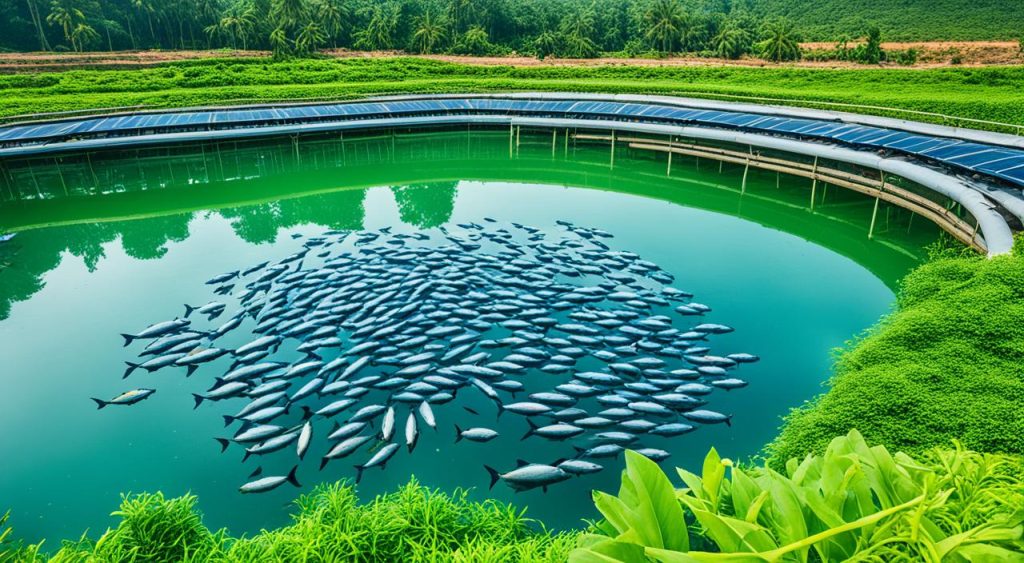
“Rohu demonstrates remarkable adaptability to diverse environmental conditions, reducing the risk of disease outbreaks and enhancing resilience in aquaculture operations.”
The popularity of rohu is growing, leading to new farming methods. For example, raising rohu with other carp species and using intensive systems works well. With a focus on sustainable farming and genetic improvements, the future of rohu fish farming looks promising. It’s set to play a big role in the region’s seafood industry.
Sourcing and Selecting Quality Rohu
Enjoying delicious and nutritious rohu fish starts with the right sourcing and selection. Rohu is a popular freshwater fish known for its firm texture, mild flavor, and nutritional value. To get the freshest and tastiest rohu, consider these key factors.
First, look for rohu with bright, clear eyes and vibrant red gills. The flesh should be firm and springy, bouncing back when pressed. Avoid fish that looks dull, has discoloration, or feels slimy, as these signs suggest it’s not fresh.
Online retailers now offer fresh rohu, making it easy to get the right cut for your dish. Whether you need whole fish for curries or steaks for grilling, you can find it pre-cut and cleaned.
When where to buy rohu, check the supplier’s reputation and customer reviews. Choose sellers known for their rohu freshness and good delivery practices. This ensures you get the best quality fish.
“The key to enjoying rohu at its best is to how to select rohu that is truly fresh and of the highest quality. With the right selection, you can unlock the full potential of this nutritious and versatile fish.”
Keep these tips in mind to confidently where to buy rohu and pick the best quality. This way, you can make delicious and healthy rohu meals for your loved ones.
Sustainable Fishing Practices
The demand for rohu, a popular freshwater fish, keeps growing. It’s vital to have sustainable fishing and farming methods. Responsible management of rohu fisheries and farms keeps the species safe and the water ecosystems healthy. This means controlling how many fish are in the water, checking the water quality, and using the right food for them.
There are also plans to create geographical indication (GI) tags for certain rohu types, like the Mithila Rohu from India’s Mithila region. These tags help make sure the rohu is real and of high quality. They also support the local people who grow it.
There are rohu conservation projects to protect the fish and its home. These projects might fix up the fish’s living spaces, control how much fishing happens, and make plans just for the rohu. By focusing on sustainable rohu fishing and responsible rohu farming, we can keep enjoying this fish and protect the places it lives.
“Sustainable aquaculture is not just an environmental necessity, but also a social and economic imperative for communities that depend on healthy fisheries.”
The aquaculture industry is getting bigger, so we must focus on sustainable fishing practices and responsible rohu farming. By doing our best and supporting conservation, we can meet the growing need for rohu without harming the environment.
Rohu Recipes and Meal Ideas
Rohu, a fish full of nutrients, is great for cooking. It can be made in many ways, from traditional Bengali dishes to new international recipes. This fish can make many meals better.
Classic Bengali Rohu Curry
The Rui Macher Kalia is a favorite Bengali dish. It’s a rich curry with rohu fish, onions, tomatoes, and spices. People love it, giving it a 5 out of 5 rating. It’s easy to make in 45 minutes and serves 6 people.
Crispy Rohu Fritters
For a tasty snack, try rohu fritters. These are coated in a light batter and fried. They’re great with a tangy sauce for dipping.
Rohu Salad and Sandwiches
Rohu is also good in salads and sandwiches. A rohu salad with fish, veggies, and dressing is refreshing. Adding rohu to sandwiches makes them more filling and tasty.
Grilled and Baked Rohu
Grilling or baking rohu is a healthier option. A tandoori spice blend gives a nice char to the fish. Serve it with rice or veggies for a full meal.
| Recipe | Ingredients | Cooking Time | Serving Size |
|---|---|---|---|
| Rui Macher Kalia | 6 pieces of Rui/Rohu fish 2 medium-sized onions 1 large tomato 2 tbsp of ginger-garlic paste 2 dry red chilies Various spices like turmeric, cumin, coriander powders, green cardamom, cloves, cinnamon, garam masala powder 1/2 cup of mustard oil | 45 minutes (15 minutes preparation, 30 minutes cooking) | 6 servings |
| Rohu Fish Curry | 500 gm rohu fish 1 teaspoon panch phoron 1/4 cup chopped coriander leaves 1/4 teaspoon crushed black pepper 1/2 inch ginger 1/2 teaspoon turmeric Salt as required 1/4 cup mustard oil 2 tomatoes 1 teaspoon mustard seeds 1/2 teaspoon cumin seeds 1 teaspoon red chili powder 3 teaspoon garlic paste | Marination time for fish – 30 minutes; Cooking time for masala – 2 minutes; Cooking time for tomato masala – 8-10 minutes; Cooking time for gravy – 4-5 minutes; Final cooking time after adding fish – 4-5 minutes | Not specified |
Rohu fish is great for many dishes, from Bengali curries to new recipes. It’s a versatile fish that can make your meals special. Try different rohu recipes to enjoy its flavor and nutrition.
Rohu Aquaculture Practices
Breeding and Hatchery Management
Rohu is a key fish in aquaculture around the world. Its farming depends on good breeding and hatchery management. These fish grow up and have babies in rivers during the monsoon season.
To make sure there are enough baby fish, farmers use special breeding methods. Hatcheries are key in this process. They take care of the baby fish until they are big enough to go to ponds and lakes. Keeping the water clean, feeding them, and preventing diseases are important for their growth.
Lao People’s Democratic Republic is a big producer of rohu. These fish can lay between 226,000 to 2,794,000 eggs. They grow fast, reaching 35-45 cm long and 700-800 g heavy in just one year.
Starting in 1957, farmers began breeding rohu on purpose. This helped make it a popular fish in freshwater. The Chinese method of circular hatcheries is often used to produce baby rohu. This ensures there are enough young fish for ponds and lakes.
“Rohu carp cultured using the ASA feed-based technology grew from 16 g to 477 g in 221 days, yielding an average of 6,721 kg/ha.”
Improving how we breed and manage hatcheries can make rohu farming better. This helps make this fish farming more sustainable and productive.
Rohu Conservation and Sustainability
Rohu is a fish found in freshwater that many people farm. Yet, we’re working hard to keep it safe for the future. Problems like damaged habitats, dirty water, and too much fishing threaten its survival. To fix this, we’re setting up protected areas, making fishing rules, and supporting eco-friendly fish farming.
Challenges and Initiatives
Too much fishing has hurt rohu numbers, so we’re focusing on fishing right and fixing habitats. We’re also working on improving rohu genetics, fighting diseases, and making better fish food. These efforts help keep the rohu safe for future generations, which is important for our food and nature.
The WorldFish Carp Genetic Improvement Program is leading the way in improving rohu and other fish. With support from groups like USAID and the Bill and Melinda Gates Foundation, they’re creating better rohu fish. The new G3 rohu fish grow 37% faster, which is great news for sustainable fish farming.
FAQ
What is rohu?
Rohu, also known as rui or roho labeo, is a type of freshwater fish. It belongs to the carp family. It’s found in the rivers of South Asia, including India, Pakistan, Bangladesh, Nepal, and Myanmar.
What are the physical characteristics of rohu?
Rohu is a large fish with a silver color and an arched head. It can grow up to 2 meters long and weigh up to 45 kg. It has a streamlined, muscular body typical of cyprinid fish.
What are the nutritional benefits of rohu?
Rohu is a nutritious fish, packed with essential nutrients. It’s a great source of high-quality protein, omega-3 fatty acids, and various vitamins and minerals.
How does rohu benefit health?
Rohu’s omega-3 fatty acids help reduce inflammation and lower triglyceride levels. They also improve blood vessel function, supporting heart health. These omega-3s are important for brain cells, enhancing memory, learning, and cognitive function.
How is rohu commonly prepared and used in cuisine?
Rohu can be prepared in many ways, like frying, baking, grilling, or in curries and stews. It’s a staple in traditional dishes across South Asia, especially in Bangladesh, Bhutan, Nepal, Pakistan, and parts of India.
How important is rohu in aquaculture?
Rohu is a key species in South Asia’s aquaculture. It’s farmed in ponds, lakes, and other freshwater areas. This helps provide a steady supply of this nutritious fish to meet growing demands.
What should I look for when purchasing rohu?
Look for signs of freshness when buying rohu, like bright eyes, red gills, and firm flesh. Many online stores now offer fresh rohu, including pre-cut and cleaned options for convenience.
How is the sustainability of rohu fishing and aquaculture being addressed?
Ensuring rohu’s sustainability is crucial for its population and the environment. This involves regulated stocking, monitoring water quality, and responsible feed. Efforts are also made to establish GI tags for rohu varieties, promoting sustainable production.
What are some popular rohu recipes and meal ideas?
Rohu is versatile in cooking, offering many recipe ideas. From Bengali rohu curry to crispy fritters, it can be grilled, baked, or added to salads, sandwiches, and tacos. This makes it a great protein addition to various meals.
How is rohu bred and hatchery-managed in aquaculture?
Rohu matures between two and five years old and spawns during the monsoon. In aquaculture, induced spawning ensures consistent fry production. Hatcheries are vital for rearing the spawn, which is then raised in ponds and lakes.
What are the challenges and initiatives related to rohu conservation and sustainability?
Challenges like habitat damage, pollution, and overfishing threaten rohu populations. To address this, efforts include protected areas, fishing rules, and sustainable farming. Research focuses on genetic improvement, disease management, and feed optimization to reduce environmental impact.
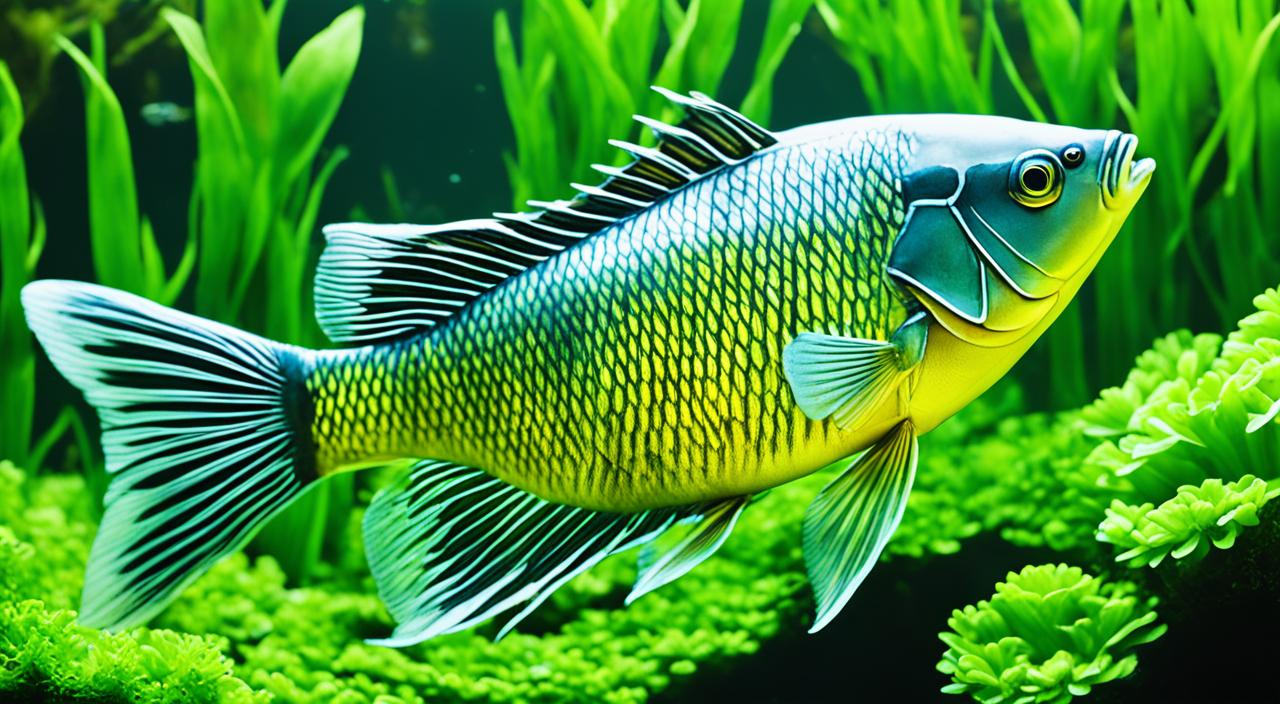




One Comment